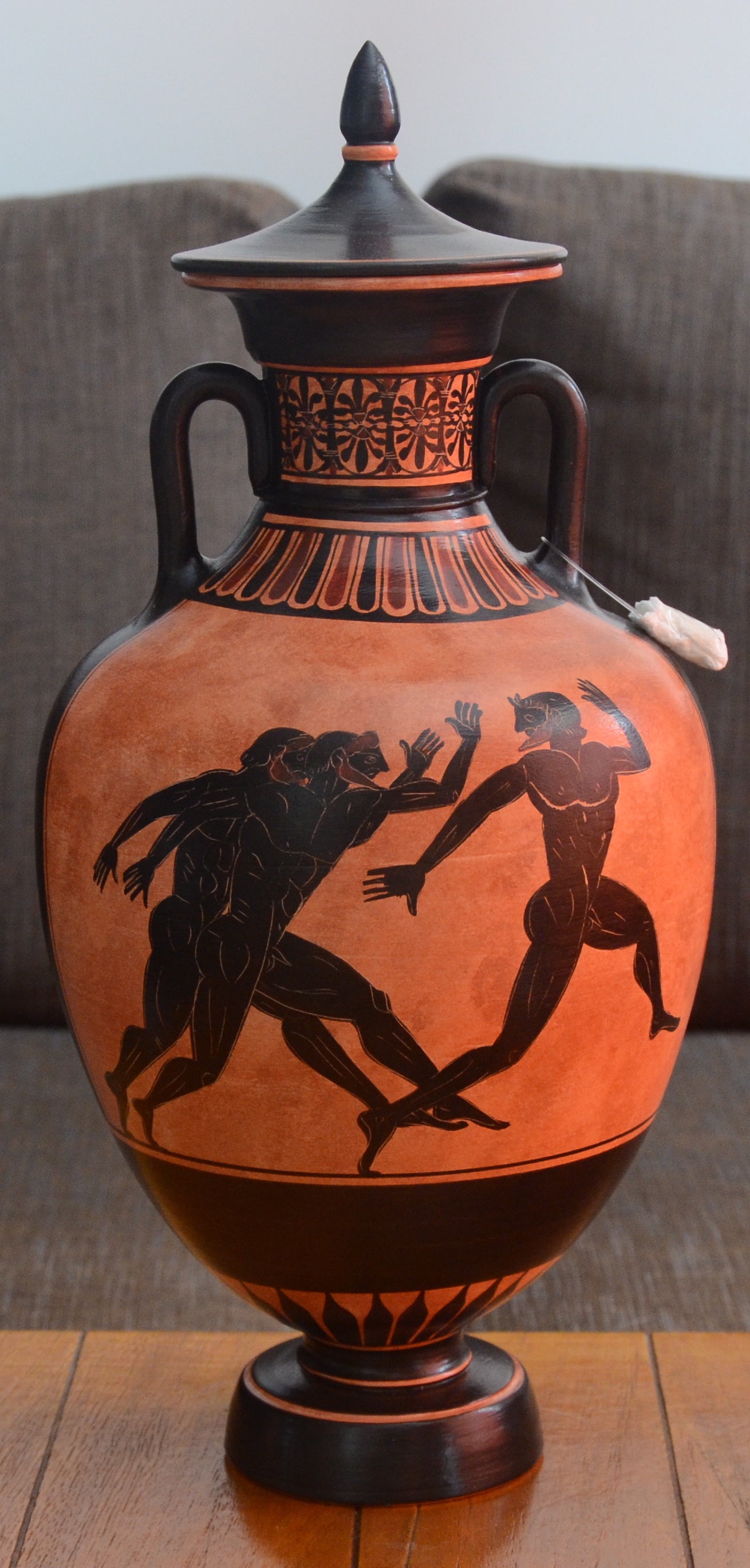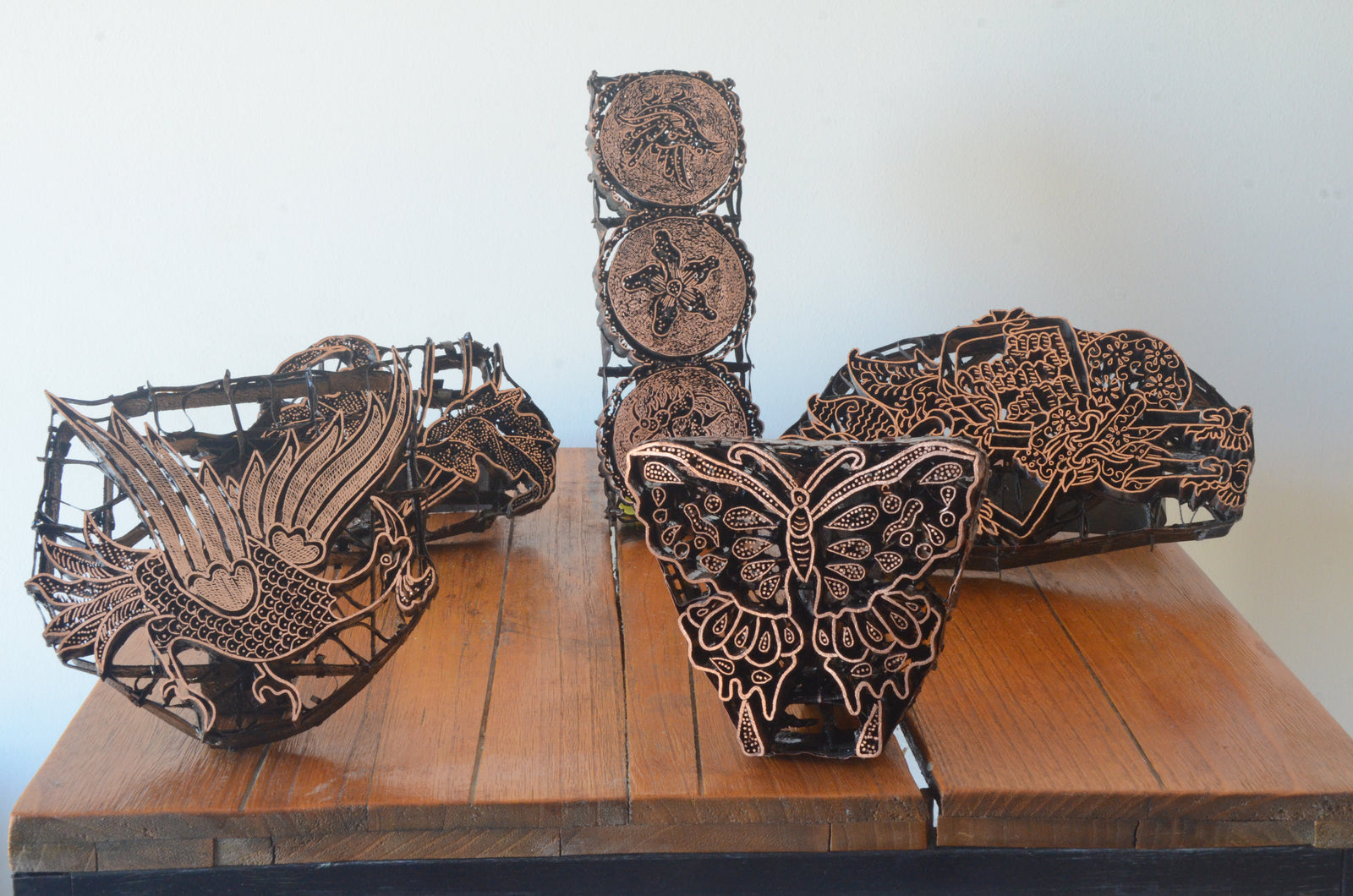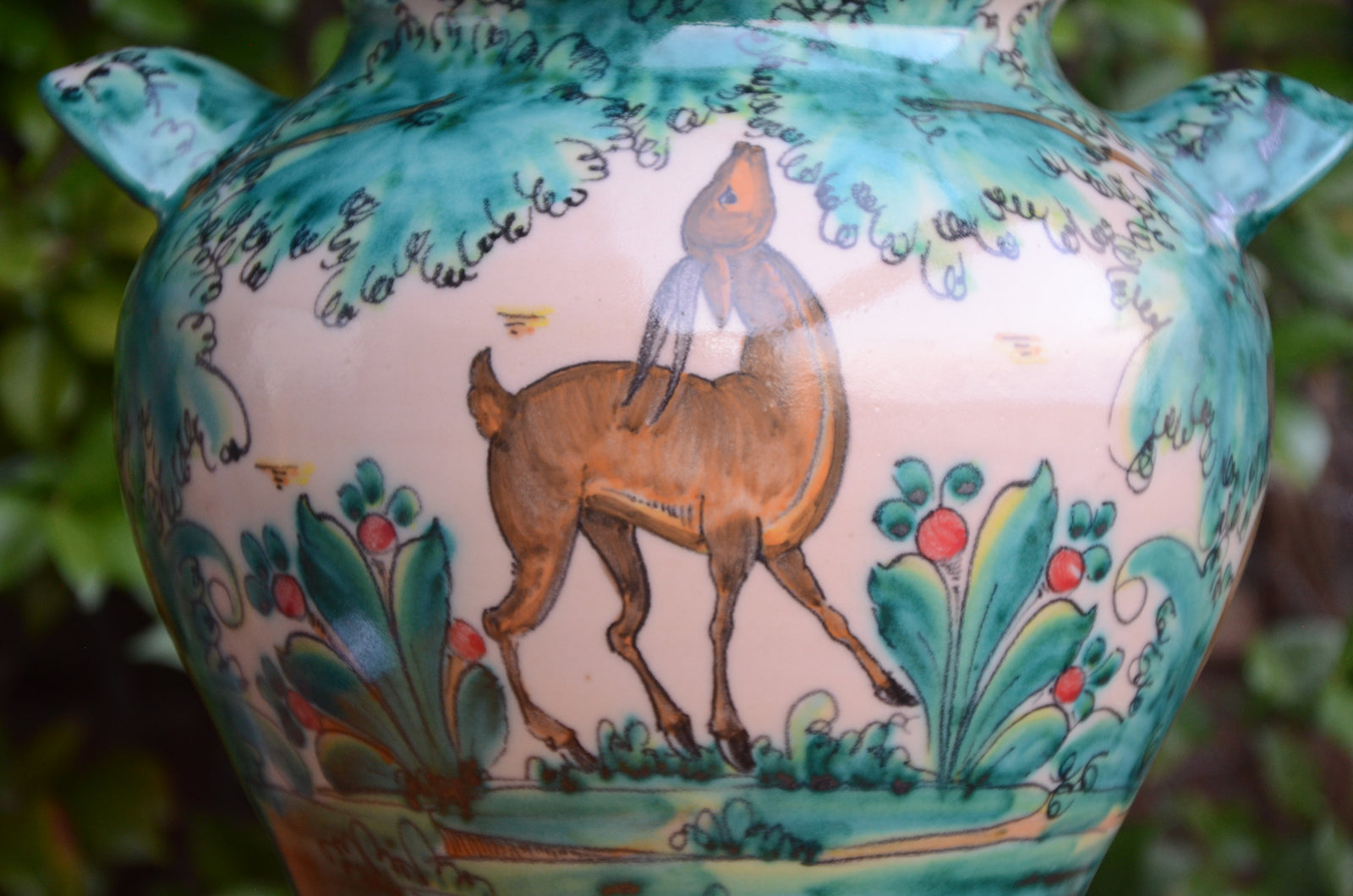
The pottery technique is very elaborated, and it is basically the same we use today: after demineralizing the clay it is melted with water and left for a while before mixing and kneading to eliminate the air bubbles, and then filtered and placed on the lathe to be modeled. Once the piece is modeled, it is introduced into the oven to be baked at 800ºC. This first cooking produced the oxidation of the clay, which turned red color. Then the painter covered with varnish the areas that wanted to turn black color. Then the piece suffered a second cooking where the oven was fed with green wood and leaves that produced smoke in quantity. This, together with the high temperatures around 950ºC turned the varnish’ ferric oxide into black color, while the rest of the clay that wasn’t covered with varnish remained red at the return to normal temperatures.
The small pieces were crafted with only one body, adding only the handlers and the foot, but the bigger pieces were made welding several parts with diluted clay. The resulting pot, strong like the glass, allowed the storage and transport of foods.
The spread of the ceramics started with the Mediterranean colonization by the Greeks around the VII century b.C., when Corinth became the main exporter of potteries. On the VI century, Corinth was overcome by Athens, which will have the monopoly on ceramics production.
During such an extensive period of time, the Greek pottery has got different periods clearly differentiated, but the pieces we have for sale belong to some of the most relevant: the Geometric Style, the Style of the Black Figures, and the better known and that which we have in mind when we think about the Ancient Greek ceramics: the Style of the Red Figures.
The pieces we introduced have been made by hand by Sophia, an excellent artisan (that you can see hands on in the pictures) that makes accurate reproductions of the originals which are exhibited in different museums around the globe.
Comments will be approved before showing up.

